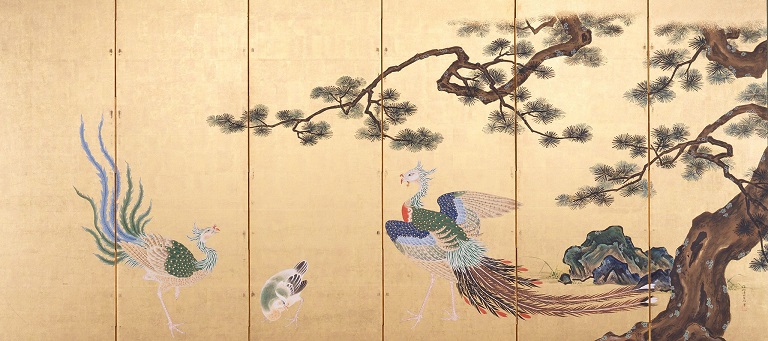Shortly after I was born, my father was shipped off by the Navy to live at Subic Bay Naval Station, where I spent the first two years of life. During that period, my mother took classes in Japanese art. Our homes, even after we returned to Philadelphia, always had some kind of Japanese artwork on display. When I bought my first apartment, my sister ound one of my mother's works, had it framed, and delivered it to my home. It still hangs on the wall of my man-cave in the basement.
I've always had some kind of Asian influence, either art or literature, in my life. I suppose it's the result of my parents' years in the Philippines and then my father's subsequent time in Micronesia after their divorce. We children always received some kind of books or other material from his travels.
Recently, my sister commented that she'd taken my mother and half-sister to the Philadelphia Museum of Art to see the Kano Exhibit. I was jealous, until she told me it was a four-part exhibit due to the nature of the material. Yesterday, we drove down and joined them for part 2 - Ink and Gold.

Kano is fascinating art. It's hard to describe because it is a mixture of fine detail and vague brushwork. I find it difficult to describe what the Kano Style is. Sharp lines, but also vague and broad strokes and colors. Often, it's as if the artists want specific details to pop out while the rest of the picture is decidedly Impressionistic and Minimalist.
The Kano School was founded by Kano Masonobu, and was passed down through a rigourous system of study and studio work. Many of the Kano artists were descendants of Masonobu, though if a relative was not considered adept enough, the best student was often 'adopted' as part of the family to continue the lineage. Masonobu's son Motonobu is generally credited with creating and defining the distinctive style by which Kano art is identified.
The school lasted for 874 years, and many of the works are still available to be seen. Its longevity is a testament to their ability to adopt new techniques and adapt to new styles over the years while remaining true to the essential themes and practices of the school itself. Eventually the Kano School was patronized by the ruling shogunate, and were decorators and artists for the wealthy and powerful elite of Japan.
I find the art to be delicate and peaceful, even the works designed to exhibit action and promote fear. Several pieces I recognized from my youth, and memories of a child's fascination with strange faces and stories - and a reminder of the fear of unusual and frightening dragons and warriors swept over me.
It's not for everyone. My wife enjoyed the exhibit but is not at all a fan of Japanese, or any Asian, work. After 2 and a half hours with the exhibit we headed across the hall to European art where we took in some Monet, Gaugin, van Gogh and Pissarro. The shift in culture was not sudden, there was some work by Gustave Klimt which mixed the Impressionistic styles of the late 1800s with the influence of Asia (including the declining Kano School).


